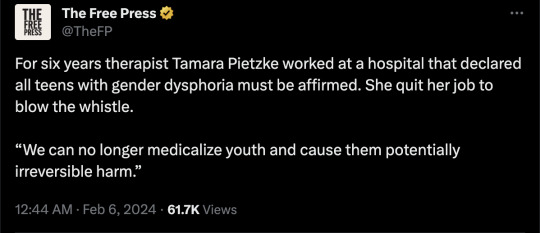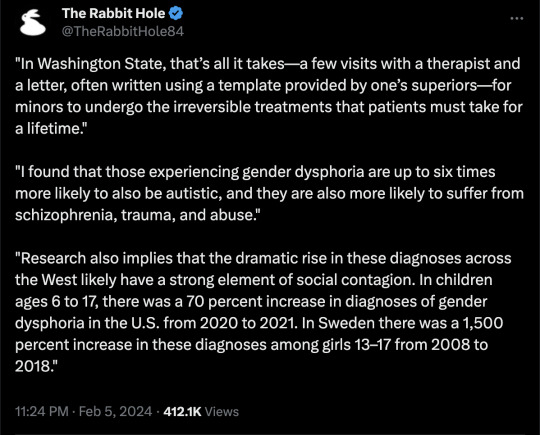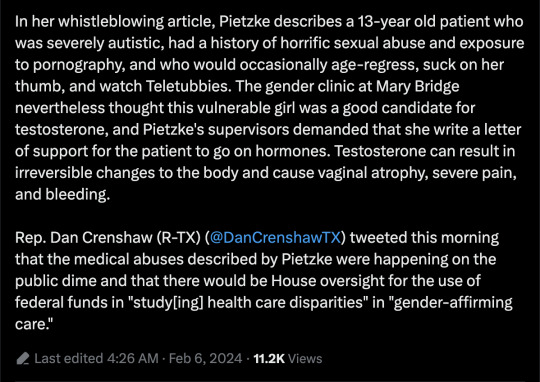#Puget Sound Express
Explore tagged Tumblr posts
Text





A humpback named Two Spot
#artists on tumblr#original photographers#original photography#pacific northwest#nature#washington#pnw#nikon#orofeaiel#humpback#whale#two spot#ocean#Strait of Juan de Fuca#coast#whale watching#puget sound express
90 notes
·
View notes
Text
Happy Pride Month!
instagram
#puget sound#magnolia seattle#discovery park loop trail#seattle parks#adobe express#epidemic sound#capcut#每週一行#Instagram
0 notes
Text
Trump admin aims to gut salmon spending
April 11, 2025
https://www.kuow.org/stories/trump-admin-wants-to-gut-salmon-spending
The Trump White House wants to eliminate several programs that benefit Pacific salmon, the iconic but widely threatened species of the Pacific Northwest.
Much of the effort to keep Pacific salmon from disappearing is funded by the National Oceanic and Atmospheric Administration.
An internal document from the Office of Management and Budget, reviewed by KUOW, calls for eliminating NOAA’s Pacific Coastal Salmon Recovery Fund, as well as national grant programs for species recovery, interjurisdictional fisheries, and habitat conservation and restoration.
Overall, NOAA would see a 27% cut in its $6 billion budget under the White House proposal, which has not been finalized and is subject to Congressional approval.
In 2023, the Pacific Coastal Salmon Recovery Fund distributed $107 million to states and tribes, with Washington state receiving $26 million, more than any other recipient. Coastwide, the fund restored 3,624 acres of salmon habitat in 2023 and removed obstacles enabling salmon to reach an additional 202 miles of spawning streams, according to NOAA.
“It's very troublesome because we just want to get the work done and get our salmon back,” Lummi Nation Councilmember Lisa Wilson said.
Treaties signed in the 1850s, before Washington was a state, obligate the state and federal governments to keep salmon around in exchange for taking tribal lands.
“We ceded a lot of land and we were promised that we would always have, as [Territorial Gov.] Isaac Stevens said, we would always have fish for our frying pans,” Wilson said. “It has been, ever since we signed that treaty, a big fight just for the promises to be upheld.”
If the salmon recovery fund is eliminated, “that will have huge impacts to salmon recovery, treaty rights, southern resident killer whales, and fishing communities all up and down the coast and Puget Sound,” Nisqually Tribe natural resources director David Troutt said by email. “We rely on those funds to fund capacity to develop and implement projects all across the state.”
“The importance of NOAA funding across a broad swath of programs along with their knowledge and technical expertise for the West Coast salmon and orca recovery cannot be overstated,” Erik Neatherlin, director of Washington Gov. Bob Ferguson’s Salmon Recovery Office, said by email.
The Office of Management and Budget notifies agencies of its proposed cuts in a process known as a “passback.” Agencies can appeal the passback cuts before the budget is presented to Congress.
“Passback eliminates functions of the Department that are misaligned with the President's agenda and the expressed will of the American people,” the budget document states.
“Passback levels support a leaner NOAA that focuses on core operational needs, eliminates unnecessary layers of bureaucracy, terminates nonessential grant programs, and ends activities that do not warrant a Federal role,” it continues.
The White House proposal would remove programs that protect orcas and other marine mammals, sea turtles, and endangered species from the oceans agency and put them under the umbrella of the U.S. Fish and Wildlife Service.
Other proposed cuts that could harm Washington salmon include:
Elimination of the National Estuarine Research Reserve System. The system protects 29 estuaries nationwide, including Skagit County’s Padilla Bay, home to the second-largest eelgrass meadow on the west coast of North America.
Elimination of Sea Grant, a federal-university partnership that funds research and extension and trains students in coastal and Great Lakes states. In 2023, Washington Sea Grant claimed to have produce $38 million in economic benefits by spending just $2.8 million in federal funds.
Halving of funding for the National Ocean Service, which conducts oceanographic research, responds to oil spills, funds coastal zone management, and manages protected areas including the Olympic Coast National Marine Sanctuary.
7 notes
·
View notes
Text










That was a tougher trip than anticipated. It was controlled chaos getting it all done while unwell but in the midst of that, my entire family had a collective anxiety attack over renting the property to a family with minor children given how close it is to the frigid Puget Sound and not fully gated. My sister had expressed that same reaction a few weeks ago when we found out (I can’t ask about kids, that’s against the Fair Housing Act) but all of the sudden, I panicked like I’d done something wrong and a little one was going to get hurt. My brother, sister and niece all have either raised or are raising little kids and they know it can just take a second when your back is turned. Plus, we are all very anxious generally. They were trying to figure out how to get me out of the lease as though it was my only option and my nephew said I should speak to a real estate attorney. This was all three days before they moved in.
I had a panic attack on the way home with some pretty dark intrusive thoughts that locked into my brain. I did speak to an attorney and there’s some things I can do to sharpen the lease but it’s ok for now. I need to get more insurance and I had a carefully scripted conversation with the parents. They didn’t seem stressed at all. Ultimately this is their responsibility to choose a space where their kids are safe.
My sister and I went to Pike Place Market and debriefed over lunch. We learned a lot about ourselves and what to do in this process. I shift quickly into panic and irrational thinking, as well as take on too much responsibility. She saw some stuff in herself as well. All in all it was fine in the end. I slept hard on the plane and hard last night. I can have a chill day today and then tomorrow is my infusion.
16 notes
·
View notes
Text



By: Tamara Pietzke
Published: Feb 5, 2024
For six years I worked at a hospital that said all teenagers with gender dysphoria must be affirmed. I quit my job to blow the whistle.
I know from firsthand experience what hard times are. Though I had a happy childhood, raised as the middle child by working-class parents in Washington State, my mom died of ovarian cancer when I was 22.
After that, my family fell apart. I felt lost and alone.
I decided to become a therapist because I didn’t want anyone to go through what I had, feeling like no one on this planet cares about them. At least they can say their therapist does.
I earned my master’s in social work from the University of Washington in 2012, and I have worked as a therapist for over a decade in the Puget Sound area. Most recently, I was employed by MultiCare, one of the largest hospital systems in the state.
For the six years I was there, I worked with hundreds of clients. But in mid-January, I left my job because of what I will go on to describe.
The therapeutic relationship is a special one. We are the original “safe space,” where people are able to explore their darker feelings and painful experiences. The job of the therapist is to guide a patient to self-understanding and sound mental health. This is a process that requires careful assessment and time, not snap judgments and confirmation of a patient’s worldview.
But in the past year I noticed a concerning new trend in my field. I was getting the message from my supervisors that when a young person I was seeing expressed discomfort with their gender—the diagnostic term is gender dysphoria—I should throw out all my training. No matter the patient’s history or other mental health conditions that could be complicating the situation, I was simply to affirm that the patient was transgender, and even approve the start of a medical transition.
I believe this rise of “affirmative care” for young people with gender dysphoria challenges the very fundamentals of what therapy is supposed to provide.
I am a 36-year-old single mother of three young kids all under the age of six. I am terrified of speaking out, but that fear pales in comparison to my strong belief that we can no longer medicalize youth and cause them potentially irreversible harm. The three patients I describe below explain why I am taking the risk of coming forward.
* * *
Last spring, I started seeing a new client, who at 13 years old had one of the most extreme and heartbreaking life stories I’ve ever heard. (For the sake of clarity, I am referring to all patients by their biological sex.)
My patient’s mother has bipolar disorder and was so abusive to my patient that the mother was given a restraining order. My patient was sexually assaulted by an older cousin, by one of her mother’s boyfriends, and also once at school by a classmate. Her diagnoses include depression, PTSD, anxiety, intermittent explosive disorder, and autism. She is being raised by her mother’s ex-boyfriend (not the one who assaulted her).
The year before I started seeing her, when she was 11, she was hospitalized for talking about committing suicide. Later that year, a pediatrician diagnosed her with gender dysphoria after she started to question her gender. The pediatrician referred her to Mary Bridge Children’s Gender Health Clinic, whose clinicians recommended she take medicine to suppress her periods and that she think about starting testosterone.
Mary Bridge, MultiCare’s pediatric hospital, runs the gender clinic for minors and employs nurses, social workers, dietitians, and endocrinologists, who provide gender-affirming care, which includes prescribing hormones to young patients who question their gender. In order to get that prescription, patients first need a recommendation letter from a therapist. Because Mary Bridge is a part of MultiCare, their patients were often referred to therapists like me who were in their system.
In an April 2022 blog post, a Mary Bridge social worker wrote that the gender clinic’s referrals increased from less than five a month in 2019 to more than 35 a month in 2022. In May 2022, the clinic received a $100,000 donation from Patient-Centered Outcomes Research Institute “to study health care disparities” in transgender youth.
The clinic operates in Washington, one of the states with some of the most lenient legislation on gender transition for youth. In May 2023, the state legislature passed a law guaranteeing that youth seeking a medical gender transition can stay at Washington shelters—and the shelters are not required to notify their parents.
Because of my patient’s autism, it was difficult for us to engage in introspective conversations. During our first visit, she came over to my desk to show me extremely sadistic and graphic pornographic videos on her phone. She stood next to me, hunched over, hyper-fixated on the videos as she rocked back and forth. She told me during one session that she watched horror and porn movies growing up because they were the only ones available in her house.
She showed up to our therapy sessions in disheveled, loose-fitting clothes, her hair greasy, her eyes staring down at the ground, her face covered by a Covid mask almost like a protective layer. She went by a boy’s name, but she never raised gender dysphoria with me directly—though one time she told me she would get mad at the sound of her own voice because “it sounds too girly.” When I asked her how she felt about an upcoming appointment at the gender clinic, she told me she didn’t know she had one.
In between scrolling through videos on her phone, she told me how she cried every night in bed and felt “insane.” She described a time when she was eight years old and her mother nearly killed her sister. She remembered her mother being taken away. At times, she would “age-regress,” she told me, by watching Teletubbies and sucking on pacifiers.
When she started seeing me, she had recently threatened to “blow up the school,” which resulted in her expulsion.
I knew I couldn’t solve all of her problems, or make her feel better in just a few therapy sessions. My initial goal was to make her feel comfortable opening up to me, to make the therapy room a place where she was heard and felt safe. I also wanted to try to protect her from falling prey to outside influences from social media, her peers, or even the adults in her life.
With a patient like this, with so many intersecting and overwhelming problems, and with such a tragic history of abuse, it took our first three sessions to get her feeling more comfortable to even talk to me, and to understand the dimensions of her problems. But when I called her guardian last fall to schedule a fourth appointment, he asked me to write her a letter of recommendation for cross-sex hormone treatment. That is, at age 13, she was to start taking testosterone. Such a letter from me begins the process of medical transition for a patient.
In Washington State, that’s all it takes—a few visits with a therapist and a letter, often written using a template provided by one’s superiors—for minors to undergo the irreversible treatments that patients must take for a lifetime.
I was scared for this patient. She had so many overlapping problems that needed addressing it seemed like malpractice to abruptly begin her on a medical gender transition that could quickly produce permanent changes.
The MultiCare recommendation letter Tamara was given for approving the medical treatment of minors with gender dysphoria. I emailed a program manager in my department at MultiCare and outlined my concerns. She wrote back that my client’s trauma history has no bearing on whether or not she should receive hormone treatment.
“There is not valid, evidenced-based, peer-reviewed research that would indicate that gender dysphoria arises from anything other than gender (including trauma, autism, other mental health conditions, etc.),” she wrote.
She also warned that “there is the potential in causing harm to a client’s mental health when restricting access to gender-affirming care” and suggested I “examine [my] personal beliefs and biases about trans kids.”
When Tamara outlined her concerns about giving a patient testosterone to her manager at MultiCare, she was told to “examine your personal beliefs and biases about trans kids.” She then reported me to MultiCare’s risk management team, who removed my client from my care and placed her with a new therapist.
A risk manager’s job is to minimize the hospital’s liability, but in my case, they deemed that my concerns posed a greater risk to my client than giving her a life-altering procedure with no proven long-term benefit.
I shouldn’t have been surprised by this. Just a few months earlier, in September of last year, I was one of over 100 therapists and behavioral specialists at the MultiCare hospital system required to attend mandatory training on “gender-affirming care.”
As hard as it is to believe given my work, I hadn’t heard about gender-affirming care before that moment. I needed to know more. So each night in the week leading up to the training, I searched online for information about gender-affirming care. After putting my kids to bed, I sat glued to my computer screen, losing sleep, horrified at what I found.
I discovered that neither puberty blockers nor cross-sex hormones (testosterone or estrogen) were approved by the Food and Drug Administration as a treatment for gender dysphoria. In fact, prescribing these treatments to kids can have drastic side effects, including infertility, loss of sexual function, increased risk of heart attack, stroke, cardiovascular disease, cancer, bone density problems, blood clots, liver toxicity, cataracts, brain swelling, and even death.
While gender clinicians claim hormonal treatment improved their patients’ psychological health, the studies on this are few and highly disputed.
I found that those experiencing gender dysphoria are up to six times more likely to also be autistic, and they are also more likely to suffer from schizophrenia, trauma, and abuse.
The research also implies that the dramatic rise in these diagnoses across the West likely have a strong element of social contagion. In children ages 6 to 17, there was a 70 percent increase in diagnoses of gender dysphoria in the U.S. from 2020 to 2021. In Sweden there was a 1,500 percent increase in these diagnoses among girls 13–17 from 2008 to 2018.
Yet, countries that were once the pioneers of gender transition medicine are now starting to backtrack. In 2022, England announced it will close its only gender clinic after an investigation uncovered subpar medical care, including findings that some patients were rushed toward gender transitions. Sweden and Finland undertook comprehensive analyses of the state of gender medicine and recommended restrictions on transition of minors.
I decided—though it was potentially dangerous to my career and to me—to ask questions about the findings I discovered.
The training I attended laid out an affirming model of gender care—from pronouns and “social transition” to hormone treatments and surgical intervention. In order for children to be diagnosed with gender dysphoria, the training stated, patients must meet six of eight characteristics, ranging from “a strong desire/insistence of being another gender” to “strong preference for cross-gender toys and games.”
Tamara and her MultiCare colleagues were trained to diagnose gender dysphoria among their young patients when they met six of the eight above characteristics. It was made abundantly clear to all in attendance that these recommendations were “best practice” at MultiCare, and that the hospital would not tolerate anything less.
When the leader of the training brought up hormone treatments, I shakily tapped the unmute button on Zoom and asked why 70 to 80 percent of female adolescents diagnosed with gender dysphoria have prior mental health diagnoses.
She flashed a look of disgust as she warned me against spreading “misinformation on trans kids.” Soon the chat box started blowing up with comments directed at me. One colleague stated it was not “appropriate to bring politics into this” and another wrote that I was “demonstrating a hostility toward trans folks which is [a] direct violation of the Hippocratic Oath,” and recommended I “seek additional support and information so as not to harm trans clients.”
In the training, gender-affirming treatment is presented as “suicide prevention.” As soon as I closed my laptop, I burst into tears. I care so deeply about my clients that even thinking about this now makes me cry. I couldn’t understand how my colleagues, who are supposed to be my teammates, could be so quick to villainize me. I also wondered if maybe my colleagues were right, and if I had gone insane.
Later, my boss reached out to me and told me it was “inappropriate” of me to raise these questions, telling me that a training session was not the proper forum. When I tried to present the evidence that caused me concern—the lack of long-term studies, the devastating side effects—she told me she didn’t have time to read it.
“I am speaking out because nothing will change unless people like me blow the whistle,” Tamara writes. “I am desperate to help my patients.” In retrospect, this ideology had been growing in power for a long time.
I remember in 2019 seeing signs of how gender dysphoria arose among many of my most vulnerable female clients, all of whom struggled with previous psychological problems.
In 2019, I started seeing a 16-year-old client after her pediatrician referred her to me for anxiety, depression, and ADHD. When I first met her, she had long blonde hair covering her eyes, to the point you could barely see her face. It was like she was going through the world trying to be invisible.
In 2020, during the pandemic, she told me she had started reading online a lot about gender, and said she started feeling like she wasn’t a girl anymore.
Around this time, her anxiety became so debilitating she couldn’t leave her house—not even to go to school. After taking a year off school during the pandemic, she enrolled in an alternative school for kids struggling with mental health. I was relieved that she was making friends for the first time, and seemed to be feeling a lot better.
Then she started using they/he pronouns, identified as pansexual, and replaced the skirts and fishnet stockings she often wore with disheveled and baggy clothes. Her long hair became shorter and shorter. She started wearing a binder to flatten her breasts. She tried out a few different names before settling on one that’s gender neutral.
The official diagnosis I gave her was “adjustment disorder”—an umbrella term often applied to young people who are having a hard time coping with difficult and stressful circumstances. It’s the type of diagnosis that doesn’t follow a child forever—it implies that mental distress among kids is often transient.
She came out as transgender to her family in 2021. Her mother was supportive, but her dad wasn’t. Regardless, she went to her pediatrician seeking a referral to a gender clinic.
In 2022, she went to Mary Bridge Children’s Gender Health Clinic for the first time, where the clinicians informed her and her parents that if she didn’t receive hormone replacement therapy, she could be “at increased risk for anxiety, depression, and worsening of mental health/psychological trauma,” according to her patient records. Her dad refused to start his daughter on testosterone, and so all the clinic could do was prescribe birth control to stop her period due to her “menstrual dysphoria,” or distress over getting her period. Which is something I thought all teenage girls experienced.
Five months later, she swallowed a bottle of pills and her mother had to rush her to the emergency room.
By early 2023, my client logged on to our weekly session, which we started doing by Zoom, and she told me she identified as a “wounded male dog.” She explained to me that this was her “xenogender,” a concept she had discovered online, which references gender identities that go “beyond the human understanding of gender.” She said she felt she didn’t have all of the right appendages, and that she wanted to start wearing ears and a tail to truly feel like herself.
I was stunned. All I could do was silently nod along.
After the session, I emailed my colleagues looking for advice. “I want to be accepting and inclusive and all of that,” I wrote, but “I guess I just don’t understand at what point, if ever, a person’s gender identity is indicative of a bigger issue.”
I asked them: “Is there ever a time where acceptance of a person’s identity isn’t freely given?”
The consensus from my colleagues was that it wasn’t a big deal.
“It sounds like this isn’t something that’s ‘broken,’ ” one colleague wrote me back, “so let’s not try to ‘fix’ it.”
“If someone told me they use a litterbox instead of a toilet and they were happy with it and it’s part of their life that brings them fulfillment, then great!” she continued. “I might think it’s weird, but then again, not my life.”
After learning that one of Tamara’s patients identified as “a wounded male dog,” a colleague replied: “If someone told me they use a litterbox instead of a toilet and they were happy with it and it’s part of their life that brings them fulfillment, then great!” I was baffled and alarmed by her unquestioning affirmation. At what point does a change in identity represent a mental health concern, and not something to be celebrated and affirmed? Fortunately, my client never brought up her “xenogender” again. She also isn’t on testosterone due to her father’s disapproval. So I kept these thoughts to myself, and ultimately, in order to keep my job, I let it go.
Another female patient, who transitioned as a teen, serves as a warning of what happens when we passively accept the idea that gender transition will entirely resolve a patient’s mental health issues.
This client, who I started seeing in 2022, is now 23 and rarely leaves the house, spends most of the day in bed playing video games, and envisions no path to working or functioning in the outside world due to a variety of mental health problems. In 2016, this patient was diagnosed with autism, anxiety, and gender dysphoria. Later the diagnoses grew to include depression, Tourette syndrome, and a conversion disorder. In 2018, at age 17, the Mary Bridge Gender Health Clinic prescribed testosterone, despite the fact that this patient is diabetic and one of the hormone’s side effects is that it might increase insulin resistance. The patient’s mother, who has another transgender child, strongly encouraged it.
This patient now has a wispy mustache and a deepened voice, but does not pass as male. It turns out that testosterone, which will be prescribed for life, did not relieve the patient’s other mental illnesses.
My biggest fear about the gender-affirming practices my industry has blindly adopted is that they are causing irreversible damage to our clients. Especially as they are vulnerable people who come to us at their lowest moments in life, and who entrust us with their health and safety. And yet, instead of treating them as we would patients with any other mental health condition, we have been instructed—and even bullied—to abandon our professional judgment and training in favor of unquestioning affirmation.
I am speaking out because nothing will change unless people like me—who know the risks of medicalizing troubled young people—blow the whistle. I am desperate to help my patients.
And I believe, if I don’t speak out, I will have betrayed them.
--

https://www.tandfonline.com/doi/pdf/10.1080/26895269.2022.2100644

--


Amidst the scandal, Mary Bridge Children's has deleted the above blog post by self-professed "they/them," Aytch Denaro. However, the internet doesn't forget.
#Tamara Pietzke#Jamie Reed#whistleblower#medical malpractice#medical transition#medical corruption#gender dysphoria#gender ideology#queer theory#gender affirming care#gender affirming healthcare#gender affirmation#mental health#mental health issues#mental illness#gender cult#genderwang#religion is a mental illness
37 notes
·
View notes
Text
Report from CascadeNews.com on February 13, 2014.
Notes on the geopolitical situation in Reality Immanent are provided after the report. For context, "Umbra" is solidified paranormal material, used in many medical and technological contexts.
---
Hopes are raised for full trade normalization with South Oregon; protests criticize talks
At yesterday’s Portland/Vancouver Summit, officials with both the North and South Oregon governments expressed confidence that trade relations would soon be fully normalized, opening up a lucrative market for North Oregon’s refined Umbra market.
Business leaders also voiced support, including Bedford Vinke, the embattled but outspoken CEO of JeriCo, which is responsible for roughly 30% of North Oregonian refined Umbra exports. Vinke has repeatedly warned that South Oregon is drifting into the Doradan sphere of influence.
“The politicians, they’ve got to get this deal done,” Vinke said in an interview with Mountain 5 News. “If the South isn’t buying from us, they’re buying from Dorado. And you can bet [Doradan President] Gutierrez is rubbing his hands together. Won’t take long for the South to be a Doradan protectorate.”
South Oregon’s Secretary of Foreign Affairs, Erin Seo, vociferously denied that her country was reliant on Dorado for resources or security. But she did stress that rapprochement with the North was one of the Craswell administration’s highest priorities, adding that “South and North, we’re all Oregonians, and it’s time for us to act like we’re brothers and sisters again.”
Negotiations Wednesday were marked by protests in many North Oregon cities. The self-described “true right” group “Northwest Destiny” drew over 50 people to downtown Tacoma, demanding a return to hostilities and annexation of South Oregon. Counter-protests drew approximately 300 people. Two counter-protesters were injured in confrontations with police.
---
For editor's notes on Reality Immanent's geopolitics, click to keep reading.
The geopolitics of the North American continent are substantially different in Reality Immanent than our own. The United States exists, but controls only the eastern part of their territory as we know it. Canada does not exist as a state entity. Mexico controls much of Texas. Indigenous nations such as the Salish Peoples and Haudenosaunee control large swathes of territory, as do settler-colonial nations such as Dorado and Louisiana.
An unusually high percentage of data from Reality Immanent comes from the Puget Sound region in North Oregon, a nation corresponding roughly to our Washington State and Idaho. Researchers believe this is due to a major paranormal event—called the Seattle Inversion—that occurred in 1995, destroying much of the city and leaving lingering paranormal effects across the region (including lucrative Umbra reserves).
2 notes
·
View notes
Text
Lots of culture shock out here but genuinely the fried chicken might have thrown me the most. What do your college students eat if there’s not a chicken express with a student meal deal down the street. When I went to an at large cherokee nation meeting/potluck in texas they sent us home with a box filled to bursting of chicken. I went to the puget sound at large meeting and there was not a single drumstick nor chicken tender in sight . Yall live like this?
#etxt#I think about this a lot. because when I get fast food cravings. they’re never for burgers. they’re ALWAYS for a chicken and fries type deal#and those straight up don’t exist out here. hello. it’s so dark
25 notes
·
View notes
Text
Edmonds Washington is NOT What You Think | The Truth About Living Here
https://www.youtube.com/watch?v=C0qDyjwOWSY Edmonds Washington is NOT What You Think | The Truth About Living Here Thinking about moving near Seattle? Edmonds, Washington might just be the perfect hidden gem you’ve been searching for. With stunning Puget Sound views, a walkable downtown, and a thriving arts scene, this coastal town offers small-town charm with big-city perks. Whether you're a family, retiree, or remote worker, Edmonds delivers an unbeatable quality of life just 20 minutes from Seattle. From waterfront homes to top-rated schools, we break down why so many people move here for one reason… but stay for life. 🔔Hit subscribe for the latest expert insights and valuable podcasts on mortgage tips, real estate trends, and strategies to grow wealth through smart property decisions! https://www.youtube.com/@HumphreyMortgage/?sub_confirmation=1 ✅ Important Link to Follow 🔗 Linktree https://ift.tt/9mMhvk2 ✅ Stay Connected With Me. 👉 Instagram: https://ift.tt/vQlPedm 👉 Linkedin: https://ift.tt/jMGNfVW 👉 Website: https://ift.tt/H1d0jeY 📩 For Business Inquiries: [email protected] ============================= 🎬 Recommended Playlists 👉 Mortgage Lab https://www.youtube.com/playlist?list=PLuGT35X1mS76AUvaPHN8IuRCi-FxrI3-C 👉 Mortgage Lab Podcast https://www.youtube.com/playlist?list=PLuGT35X1mS74oOo8OcrSd12Apdwv2FrYS 🎬 WATCH MY OTHER VIDEOS: 👉 What Is Debt-To-Income Ratio? How It Affects Mortgage Approval Explained https://youtu.be/mNB9acNqJds 👉 Top 7 Mistakes To Avoid For Mortgage Approval – Essential Home Buying Tips https://youtu.be/BLxBsmXvqkw 👉 How Mortgage Insurance Helps You Buy A Home With Less Than 20% Down | Real Estate Tips https://youtu.be/yjmPHZdBmx0 👉 How To Increase Your Home Sale Profits With Pre-Sale Renovations https://www.youtube.com/watch?v=DL81T99XPs0 👉 Real Estate In 2024: Essential Market Trends And Challenges To Watch | Real Estate Tips https://www.youtube.com/watch?v=-_fBuasdX8o ============================= #EdmondsWashington, #PNWliving, #SeattleSuburbs, #CoastalTown, #WashingtonState, #MoveToEdmonds, #PugetSound, #SmallTownLife, #HiddenGemsUSA, #EdmondsRealEstate ⚠️ Disclaimer: Ideas expressed may not be complete and may not apply to all situations. NEO Home Loans is a division of Luminate Home Loans, Inc. | NMLS #150953 | Luminate Home Loans, Inc. NMLS#150953. Equal Housing Lender. Corporate Headquarters 2523 Wayzata Blvd. S. Suite 200, Minneapolis, MN 55405. For licensing information, go to https://ift.tt/yYvIMiB. This advertisement does not constitute a loan approval or loan commitment. Loan approval or loan commitment is subject to final underwriting review and approval. Other terms and conditions apply. Edmonds Washington is NOT What You Think | The Truth About Living Here ✖️ Copyright Notice: This video and my YouTube channel contain dialogue, music, and images that are the property of Tim Humphrey. You are authorized to share the video link and channel and embed this video in your website or others as long as a link back to my YouTube channel is provided. © Tim Humphrey via Tim Humphrey https://www.youtube.com/channel/UCYIh6njt7ARosNWhQCi93Aw June 14, 2025 at 12:02AM
#humphreymortgage#homerenovation#homesellingtips#realestate#realestatepodcast#mortgage#finance#realestateinvesting
0 notes
Text
Events 6.4 (before 1940)
1411 – King Charles VI grants a monopoly for the ripening of Roquefort cheese to the people of Roquefort-sur-Soulzon as they had been doing for centuries. 1561 – The steeple of St Paul's, the medieval cathedral of London, is destroyed in a fire caused by lightning and is never rebuilt. 1615 – Siege of Osaka: Forces under Tokugawa Ieyasu take Osaka Castle in Japan. 1745 – Battle of Hohenfriedberg: Frederick the Great's Prussian army decisively defeated an Austrian army under Prince Charles Alexander of Lorraine during the War of the Austrian Succession. 1760 – Great Upheaval: New England planters arrive to claim land in Nova Scotia, Canada, taken from the Acadians. 1783 – The Montgolfier brothers publicly demonstrate their montgolfière (hot air balloon). 1784 – Élisabeth Thible becomes the first woman to fly in an untethered hot air balloon. Her flight covers four kilometres (2.5 mi) in 45 minutes, and reached 1,500 metres (4,900 ft) altitude (estimated). 1792 – Captain George Vancouver claims Puget Sound for the Kingdom of Great Britain. 1802 – King Charles Emmanuel IV of Sardinia abdicates his throne in favor of his brother, Victor Emmanuel. 1812 – Following Louisiana's admittance as a U.S. state, the Louisiana Territory is renamed the Missouri Territory. 1825 – General Lafayette, a French officer in the American Revolutionary War, speaks at what would become Lafayette Square in Buffalo, New York, during his visit to the United States. 1855 – Major Henry C. Wayne departs New York aboard the USS Supply to procure camels to establish the U.S. Camel Corps. 1859 – Italian Independence wars: In the Battle of Magenta, the French army, under Louis-Napoleon, defeat the Austrian army. 1862 – American Civil War: Confederate troops evacuate Fort Pillow on the Mississippi River, leaving the way clear for Union troops to take Memphis, Tennessee. 1876 – An express train called the Transcontinental Express arrives in San Francisco via the first transcontinental railroad only 83 hours and 39 minutes after leaving New York City. 1878 – Cyprus Convention: The Ottoman Empire cedes Cyprus to the United Kingdom but retains nominal title. 1896 – Henry Ford completes the Ford Quadricycle, his first gasoline-powered automobile, and gives it a successful test run. 1912 – Massachusetts becomes the first state of the United States to set a minimum wage. 1913 – Emily Davison, a suffragette, runs out in front of King George V's horse at The Derby. She is trampled, never regains consciousness, and dies four days later. 1916 – World War I: Russia opens the Brusilov Offensive with an artillery barrage of Austro-Hungarian lines in Galicia. 1917 – The first Pulitzer Prizes are awarded: Laura E. Richards, Maude H. Elliott, and Florence Hall receive the first Pulitzer for biography (for Julia Ward Howe). Jean Jules Jusserand receives the first Pulitzer for history for his work With Americans of Past and Present Days. Herbert B. Swope receives the first Pulitzer for journalism for his work for the New York World. 1919 – Women's rights: The U.S. Congress approves the Nineteenth Amendment to the United States Constitution, which guarantees suffrage to women, and sends it to the U.S. states for ratification. 1919 – Leon Trotsky bans the Planned Fourth Regional Congress of Peasants, Workers and Insurgents. 1920 – Hungary loses 71% of its territory and 63% of its population when the Treaty of Trianon is signed in Paris. 1928 – The President of the Republic of China, Zhang Zuolin, is assassinated by Japanese agents. 1932 – Marmaduke Grove and other Chilean military officers lead a coup d'état establishing the short-lived Socialist Republic of Chile. 1939 – The Holocaust: The MS St. Louis, a ship carrying 963 German Jewish refugees, is denied permission to land in Florida, in the United States, after already being turned away from Cuba. Forced to return to Europe, more than 200 of its passengers later die in Nazi concentration camps.
0 notes
Text
Ziply Fiber Restores Internet After Major Service Outage in Pacific Northwest

Source: oregonlive.com
Ziply Fiber customers across parts of Oregon and Southwest Washington experienced a significant disruption in internet and phone service on Monday, following what the company described as an internal equipment failure. The outage, which began late Monday morning, affected approximately 20,000 customers in areas including Gresham, Oregon, and the Camas-Washougal region in Washington.
The issue was first reported by customers just before noon, as large swaths of users suddenly lost access to essential connectivity services. Ziply Fiber attributed the service disruption to a “systems/equipment issue” within its internal network. Though the company acknowledged the problem and began addressing it promptly, no official timeline for restoration was initially provided.
Customers throughout the affected areas expressed frustration on social media and community forums, particularly as they relied on the service for work, school, and emergency communication. The incident raised concerns about the provider’s infrastructure resilience, especially as Ziply has positioned itself as a fast-growing alternative to larger telecom companies in the Pacific Northwest.
Service Restored, But Questions Remain
By 3:30 p.m. Monday, Ziply Fiber announced that full service had been restored. In a brief statement, the company confirmed that the internal issue had been resolved and that customers in all impacted regions should have regained access to internet and phone service.
While the resolution was relatively swift, Ziply did not release further details about the nature of the failure or what steps were taken to prevent future disruptions. The lack of transparency has left some customers questioning the reliability of the provider’s infrastructure, particularly in light of its expansion plans and upcoming ownership changes.
This incident serves as a reminder of the growing dependence on high-speed internet in both residential and commercial settings. Even a brief disruption can lead to significant inconvenience and financial impact, particularly in areas with limited broadband alternatives.
Ziply Fiber’s Future Amid Acquisition by Bell Canada
The outage comes at a time of major transition for Ziply Fiber. The company, headquartered in the Puget Sound region, is currently in the process of being acquired by Bell Canada in a deal valued at $5 billion, including both cash and assumed debt.
The acquisition, once finalized, will mark a significant cross-border expansion for Bell Canada, giving the company a strong foothold in the U.S. Pacific Northwest telecom market. However, Monday’s outage could cast a shadow over Ziply’s recent performance and may prompt Bell Canada to scrutinize the company’s infrastructure more closely during the transition period.
With customer expectations high and competition stiff in the broadband market, Ziply Fiber’s ability to maintain consistent service and quickly respond to outages will remain critical as it navigates its next chapter under new ownership. For now, while service is back online, many will be watching to see how the company reassures customers and reinforces trust in its network stability.
Visit Enterprise Wired for the Most Recent Information.
0 notes
Text
In a significant win for the Puyallup Tribe, Puget Sound residents, and health and conservation groups who had opposed an expansion of a liquified natural gas (LNG) terminal in Tacoma, Puget Sound Energy announced that it is abandoning its permit from the City of Tacoma for the project.
While the LNG terminal has been operational since February 2022, the proposed expansion would have allowed new vessels and “bunkering barges” to load LNG to power their own ships or to transfer fuel to other ships. This risky new use of the terminal would have significantly altered the activities allowed at the terminal, essentially allowing LNG barges to act like floating gas stations, refueling other ships in the Salish Sea and beyond.
Because the City of Tacoma processed the project as a permit “revision” rather than a new permit, there was no public process or environmental review. Many Tacoma residents and Puyallup tribal members were unaware of the project until after it had been approved. Tribal members and residents expressed concerns about increased safety, health, environmental, cultural and climate impacts that would result from the expansion.
The appeals filed in December by the Tribe and Earthjustice argued that the city’s authorization violated the Shorelines Management Act, Tacoma’s city code, and the Washington State Environmental Policy Act.
This is good news, though I've always been appalled that it was approved and built in the first place. But I'll certainly take it, and be doubly glad that it was followed a few days later by the biden administration "pausing" the construction of any other new facilities (though again, not the best case scenario, is it?)
2 notes
·
View notes
Text
Ojibwemowin / Digital Arts Language Sessions
Join us at In Progress to learn and practice Ojiwbwe language and create digital expression of that learning. Each session we will offer a media presentation overview. We will smudge (abaabaso) and share words of encouragement for the week before beginning. Each session we will have participants record their voices or film what was learned as part of the learning process. Participants will be encouraged to create imagery to be added to recordings.
LEAD ARTISTS
Ojibwemowin Digital Arts / Language Sessions is led by In Progress artists Niizhoogabaw Wahpepah and Tiana LaPointe.
Niizhoogabaw Wahpepah is a language educator and Ojibwemowin speaker who has been hosting language tables, teaching youth and seapking the language for fifteen + years. Tiana LaPointe, an Indigenous Documentary Filmmaker and Teaching Artist. She is Sicangu Lakota and was born on the Rosebud Reservation in South Dakota. In her formative years, Tiana grew up in Puget Sound, Washington State and the San Francisco Bay Area. Her passion for indigenous media arts at an early age In high school led her to name and co-develop, “Through the Eagles Eye” video curriculum. She’s a recipient of the Sundance Institute Knight Fellowship and the Jerome Foundation Travel and Study grant. She is a Co-convener for Mni Ki Wakan: Decade of Water Summit.
Families and Invidividuals are welcome to participate but space is limited to 8 so early registration is encouraged. . Activities will take place at In Progress - 213 Front Avenue, Saint Paul, MN. There is no cost to participate but it is expected that those that agree to participate, make every effort to attend each session. Bring water and snacks if needed.
DATES:
Thursday, September 5th 6-8PM
Thursday, September 12th 6-8PM
Thursday, September 19th 6-8PM
Thursday, October 3rd 6-8PM
Thursday, october 10th 6-8PM
Please register at the link below to save your spot in this unique workshop. You can also send us an email at: [email protected]
0 notes
Text
The Art of African Hair Braiding in Seattle: A Cultural Journey
In the vibrant city of Seattle, amidst the hustle and bustle of everyday life, there exists a hidden gem where art, tradition, and beauty intertwine - African hair braiding. This ancient practice, passed down through generations, has found a new home in the heart of the Pacific Northwest, captivating locals and visitors alike with its intricate designs and rich cultural significance. The Roots of African Hair Braiding Rooted in Africa's diverse heritage, hair braiding is not merely a stylistic choice but a deeply symbolic form of expression. Each braid, twist, and pattern tells a story, weaving together ancient traditions, familial bonds, and personal identity. For centuries, African women have used hair braiding as a way to communicate their social status, tribal affiliation, and even marital status. Embracing Diversity in Seattle In a city known for its progressive values and celebration of diversity, African hair braiding has found a welcoming community in Seattle. Local salons and braiding studios offer a space where people of all backgrounds can come together to appreciate the artistry and craft behind each braid. From intricate cornrows to bold geometric patterns, the skilled braiders in Seattle bring a touch of Africa to the Pacific Northwest. The Rise of African Hair Braiding Studios As interest in natural hair care and cultural appreciation grows, African hair braiding studios have become a thriving industry in Seattle. Skilled braiders from across the African diaspora have set up shop in the city, bringing with them a wealth of knowledge and experience in traditional braiding techniques. These studios not only offer a range of styling options but also serve as cultural hubs where clients can learn about the history and significance of African hair braiding. Preserving Tradition in a Modern World In an era where trends come and go at the speed of light, hair braiding Seattle stands as a timeless tradition that transcends fashion fads. By embracing this ancient art form, Seattle residents are not only supporting small businesses and independent artists but also preserving a piece of African heritage for future generations to appreciate. From Seattle to the World What started as a niche practice in the heart of Seattle has now gained global recognition, with African hair braiding becoming a popular choice for celebrities, influencers, and trendsetters around the world. From red carpet events to magazine covers, braided hairstyles have made a stunning comeback, showcasing the beauty and versatility of African hair textures. As the sun sets over the Puget Sound, casting a golden glow over the Emerald City, the art of African hair braiding continues to thrive, weaving together cultures, communities, and creativity in a mesmerizing tapestry of beauty and tradition.
#hair braiding tacoma#hair braiding bremerton#hair braiding and weaving#african hair#african hair braiding
0 notes
Text

Join us on February 23rd for an exclusive CreativeMornings event featuring the incredibly talented Shana Yellow Calf, an enrolled member of the Northern Arapaho in Wyoming. Shana has been producing captivating art in various mediums since the 1990s, blending her rich plains heritage (Arapaho/Shoshone), her mother’s Chippewa/Metis ancestry, and a Pacific Northwest Coastal influence from the Puget Sound area of Washington where she grew up.
Her artwork, known for its vibrant colors, narrates stories of life events and tales passed down to her, merging traditional dance forms with contemporary expressions. Shana's dedication to her craft has earned her recognition in the Indianz magazine and exhibits across prestigious galleries, including the Soil Gallery in Seattle and the Washington State History Museum.
Currently, Shana is channeling her creative prowess into a children’s book based on her celebrated piece ‘Frybread Trails’ and the Frybread Gang. This event promises an intimate glimpse into Shana’s creative process, her cultural heritage, and the stories that have shaped her art.
Tickets are going fast, so make sure to join the waitlist here: https://creativemornings.com/talks/shana-yellow-calf. If you have secured a ticket but find you cannot attend, please release your ticket to allow another creative soul the opportunity to experience Shana's inspiring journey.
Don't miss this chance to connect with the creative community and dive deep into the world of a remarkable Native American artist. See you there!
0 notes
Text
EMERALD CITY / EVERGREEN STATE / FOGHORN NITES & THE SNOWS OF TAHOMA
Hey again! Here we are in the new year, 2024, how time has gone ticking… The 4th anniversary of the great plague is on us, disorientingly, and life has hobbled on, with fresh catastrophes of the zeitgeist gathering on the year's horizon like so many sloppy thunderclouds. On the other hand, the year looks pretty harmonious from a numerological point of view, doesn't it? Strap in kiddies, we're bout to find out.
As for me, I'm entering month four of living on the West Coast, bout time I shared a bit about what that's been like. Grand! Feeling quite good about things. Not the most interesting time storywise - a blend of introverted busywork and vulnerable newness, I reckon - well, but let's keep this structured. First off, why Seattle?
If you want to understand it at a glance, open up Google Maps, search for "Seattle", click on the Layers button, and set it to "terrain". Then zoom out a little. Water first, jagged water and islands and passes, the jigsaw logic of the Puget Sound - or the Salish Sea, if you'd like the name to encompass a bit more water as well as its rightful human heirs. There's whales in that water, orcas, dolphins, seals, all manner of fish and scuttling things, and down in the depths of the sound - frighteningly deep, 450 feet on average, a fjord estuary carved by glaciers - down in the deep there are giant pacific octopus, the biggest ones there are, them big red 'uns. Zoom out a little further and you see how the mountains lay. To the west the Olympics, a vast protected area with alpine landscapes up top and temperate rainforests further below in the mountainshadows that catch the wet sea air. These forests are of the fluorescent-green, moss-matted, soggy, mushroomy, enchanted variety, with a damp mossy smell that soothes instantaneously. Head further west to the Pacific coast and you get to the wild shoreline with huge craggy rock formations that meet the forest in a thin driftwoody strip swarmed with seals and albatross. If you travel east out of Seattle you'll run into the Cascade Mountains, more wild & spread-out still, with snowy peaks and misty passes and good ol burly redneck America within an hour's drive of the soft prosperity of the big city, allowing for both cuddlin' and cussin' types of mood within close proximity, as well as winter sports and mountain hikes, and beyond those mountains you'll find the desert, oddly enough. To the south you have a goddam snow-covered volcano, Mt Rainier, or old Tahoma we'll call her, the vastness of which will stop you in your tracks on any day clear enough to bring her out.
And then there's Seattle itself, an introvertedly wacky revolutionary western boomtown obsessed with fish, filled with naturelovers, and recently becrusted with a lot of dinky glass skyscrapers and a two-decade spigot of digital tech money. Moving here feels similar to moving to New York in the way that the locals will unanimously report that it used to be a lot better, and also in the way you're quietly thinking damn - even better? as they tell you. The city has been transformed by tech money, tis true, the rents are frightful, the weird ones are struggling, and soulless commerce is tightening its cords and rising up glassy & alien … sure … But at the same time her personality is still very distinct, and all that new prosperity seems to express itself quite gently, it's like the Norway of the USA, with a sane feeling to the infrastructure and investment and a good deal of compassion in the social policies. The bus drivers will wave you on for free while you're rummaging for money. Your bills come with information on subsidies and plans if you can't pay them. The tenant protection laws are a distant dream for New Yorkers. Much of this thanks to the socialists and anarchists and union organizers and eco-warriors protesting and picketing and recruiting on streetcorners with a seriousness that'd be hard to imagine in wacky individualist NYC. It's a town in suspense between many energies. Out in the open the political tone is heavily left - it's almost comically inclusive of whatever type of individual weirdness you'd like to express - but structurally speaking the money rules, and always wins, and like in all of the USA's great cash engines, life gets harder every day that you're not making enough of it.
But in fairness, coming from NYC it feels downright cuddly with what a warm welcome I've had. The busking has been just grand. No interference from the law whatsoever, a few gentle nudges from businessowners to turn it down or point the other way, and mostly a huge wave of enthusiasm and generosity from whoever happens by. It's good vibes! The music scene - the art scene in general - has had some knocks, esp the covid period hit hard & long out here, the place still feels in recovery - but that has given me the gratifying feeling that for a change I'm in a place where demand for music is larger than supply.
Delightful circles out here, too. I made my first set of friends busking at Pike Place Market, a surprisingly big complex & wonderfully situated by the water, a tourist trap in some ways but also a geniune place of congress & free expression chock full of artists & freethinkers & a century of ghosts. Shoutout to Alex Rasmussen, who introduced me to a number of circles, venues, and open mics. Shoutout as well to the Conor Byrne open mic and its host, Sheldon, who has been going out of his way to plug me into the local folk scene. I just had my first proper Seattle indoor show there last Wednesday and it was lovely. Huge grin to everyone who came out. Scary to start a city fresh wondering if you're gonna draw. It went good! There'll be more shows! It's looking sustainable!
Which is a relief, because I was worried about sustaining the house we landed in, a weird miracle… We didn't exactly save on rent compared with Bed-Stuy, but still… Two floors! And a basement! Bats living in the attic, praise be! A quiet self-enclosed feeling, but close to the center … Incredible ! We'll see if it lasts - knock on wood - plenty of wood to knock on - hope it doesn't come loose. But it's just grand. Ten minutes on foot and you're swimming with the seals. The great fogs & drizzles come pattering down around us over the eaves. Two enormous overgrown douglas firs, hated by the landlord, grow out of the neighbor's yard and sort of envelop the house in a big green dusk. The shingles and the gutters hang loose. It's lovely! I've always wanted to live in a creaky wooden house by the sea. As I mentioned in my earlier post, we spent much of our first few months here just getting it shipshape - painting, repairing, finding furniture. I've been decking out my studio room. A separate studio room! Bless, bless!
So for the rest of the winter the idea is to let the dust settle a lil, get smart, get fit, study the banana slug, learn more medieval frog songs, and hopefully write a couple tunes meanwhile … For songwriting updates, you might like to follow along on Patreon!
Over & out, big grin, R.
0 notes
Text
This Small Town Near Seattle is the Perfect Escape!
https://www.youtube.com/watch?v=iYmhW3eFQbk This Small Town Near Seattle is the Perfect Escape! Thinking about moving near Seattle? Edmonds, Washington might just be the perfect hidden gem you’ve been searching for. With stunning Puget Sound views, a walkable downtown, and a thriving arts scene, this coastal town offers small-town charm with big-city perks. Whether you're a family, retiree, or remote worker, Edmonds delivers an unbeatable quality of life just 20 minutes from Seattle. From waterfront homes to top-rated schools, we break down why so many people move here for one reason… but stay for life. 🔔Hit subscribe for the latest expert insights and valuable podcasts on mortgage tips, real estate trends, and strategies to grow wealth through smart property decisions! https://www.youtube.com/@HumphreyMortgage/?sub_confirmation=1 ✅ Important Link to Follow 🔗 Linktree https://ift.tt/YNFl5ZP ✅ Stay Connected With Me. 👉 Instagram: https://ift.tt/OEephVZ 👉 Linkedin: https://ift.tt/GJVsBCF 👉 Website: https://ift.tt/C8uzQDZ 📩 For Business Inquiries: [email protected] ============================= 🎬 Recommended Playlists 👉 Mortgage Lab https://www.youtube.com/playlist?list=PLuGT35X1mS76AUvaPHN8IuRCi-FxrI3-C 👉 Mortgage Lab Podcast https://www.youtube.com/playlist?list=PLuGT35X1mS74oOo8OcrSd12Apdwv2FrYS 🎬 WATCH MY OTHER VIDEOS: 👉 What Is Debt-To-Income Ratio? How It Affects Mortgage Approval Explained https://youtu.be/mNB9acNqJds 👉 Top 7 Mistakes To Avoid For Mortgage Approval – Essential Home Buying Tips https://youtu.be/BLxBsmXvqkw 👉 How Mortgage Insurance Helps You Buy A Home With Less Than 20% Down | Real Estate Tips https://youtu.be/yjmPHZdBmx0 👉 How To Increase Your Home Sale Profits With Pre-Sale Renovations https://www.youtube.com/watch?v=DL81T99XPs0 👉 Real Estate In 2024: Essential Market Trends And Challenges To Watch | Real Estate Tips https://www.youtube.com/watch?v=-_fBuasdX8o ============================= #EdmondsWashington, #PNWliving, #SeattleSuburbs, #CoastalTown, #WashingtonState, #MoveToEdmonds, #PugetSound, #SmallTownLife, #HiddenGemsUSA, #EdmondsRealEstate ⚠️ Disclaimer: Ideas expressed may not be complete and may not apply to all situations. NEO Home Loans is a division of Luminate Home Loans, Inc. | NMLS #150953 | Luminate Home Loans, Inc. NMLS#150953. Equal Housing Lender. Corporate Headquarters 2523 Wayzata Blvd. S. Suite 200, Minneapolis, MN 55405. For licensing information, go to https://ift.tt/9es8adi. This advertisement does not constitute a loan approval or loan commitment. Loan approval or loan commitment is subject to final underwriting review and approval. Other terms and conditions apply. This Small Town Near Seattle is the Perfect Escape ✖️ Copyright Notice: This video and my YouTube channel contain dialogue, music, and images that are the property of Tim Humphrey. You are authorized to share the video link and channel and embed this video in your website or others as long as a link back to my YouTube channel is provided. © Tim Humphrey via Tim Humphrey https://www.youtube.com/channel/UCYIh6njt7ARosNWhQCi93Aw June 11, 2025 at 04:00AM
#humphreymortgage#homerenovation#homesellingtips#realestate#realestatepodcast#mortgage#finance#realestateinvesting
0 notes